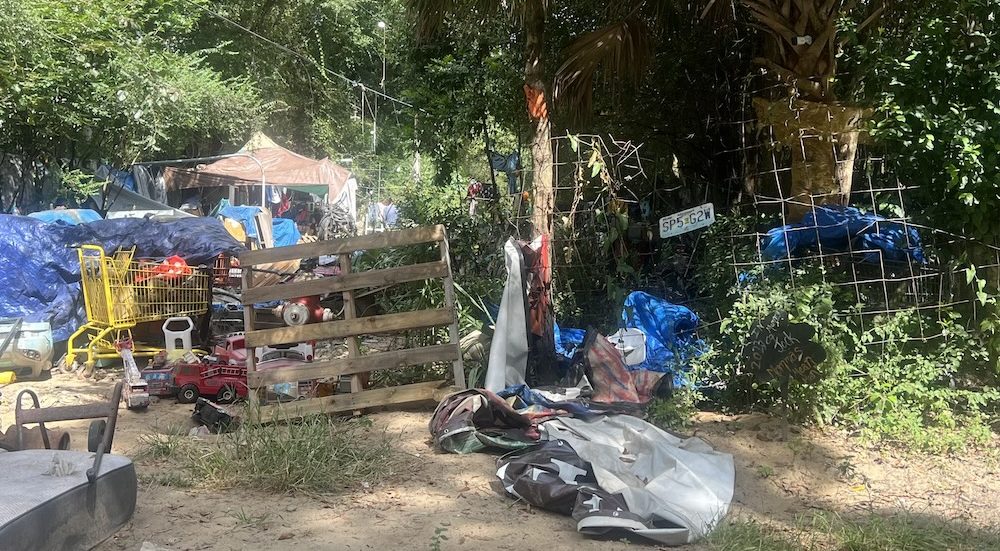The homeless population at the Beggs Lane encampment runs the gamut from hard-working, minimum-wage earners to substance abusers to sexual predators. Dozens of stray dogs and cats, countless piles of trash, and a smattering of dilapidated RV campers, boats, and vehicles add to the ambiance.
- The EPA minced no words in telling the county that anyone living there is unacceptable. Yet, just about 100 feet from the sign is a couple sitting in lawn chairs surrounded by all of their worldly possessions.
Walter Arrington, a homeless health navigator for Community Health Northwest Florida, said the repercussions for those living at the Superfund site include “aggressive forms of cancer.”
The combination of EPA enforcement and House Bill 1365 has spurred the county to partner with service providers to transition the homeless population from Beggs Lane to other living arrangements. HB 1365 goes into effect Oct. 1 and prohibits unauthorized camping or sleeping on public property. The county has two additional months to remove everyone from Beggs Lane by Dec. 2.
- A groundswell of support began with the county hosting meetings with the service providers. Since then, their outreach efforts to connect with the homeless in the encampment have included shelters, transitional housing, IDs, health care, mental health services, and substance abuse programs. Providers stop by the encampment daily and drop off food and water to the homeless individuals.
County’s Largest Encampment
Beggs Lane is the longest active homeless encampment in the county at nearly 20 years. No one describes Beggs Lane as safe, including those who live there. Women, in particular, are in constant danger. Arrington estimates anywhere from 20 to 30 women camp there on a given day. Homeless service providers kick into high gear to find shelter or housing for women, knowing the consequences of their staying at Beggs Lane are dire.
“We’ve known that (sex) trafficking has gone on down there,” Arrington said. “We’ve had kidnapping situations and false imprisonment. When a woman exits into homelessness, we try to pull them out quickly. The metrics essentially say show me a woman who’s been experiencing homelessness for 30 days, and I will show you a victim of sexual violence—full stop.”
Convincing those at the encampment to accept help is a Herculean task. Criminality, substance abuse, and severe and persistent illness are common traits among those at the encampment who refuse help from homeless service providers.
“Some of them, no matter what type of help you try to give them, won’t take it,” County Emergency Manager Travis Tompkins said. “In some cases, there are some folks who that’s how they want to live. There’s not a whole lot of things you can do to convince somebody to take help.”
A 55-year-old man, nicknamed “Right On” since childhood, has lived at the encampment for the past few years. He describes the people at Beggs Lane as a “big family.” A 58-year-old woman affectionately referred to as Mom chimes in and says, “Closer to family than blood. We are the worst of the worst in society. You have no idea how we’ve been treated. Bad. Bad.”
The Beggs Lane family will soon break up after the county and homeless shelter providers figure out who to transport where. Right On holds out hope that the encampment will somehow remain intact. He argues that the land is private and not beholden to HB 1365.
Reality says otherwise.
- “Right now, there’s just a lot of fear,” Arrington said. “There’s a lot of unknown, and it’s scary. Everything that person owns is in that camp.”
